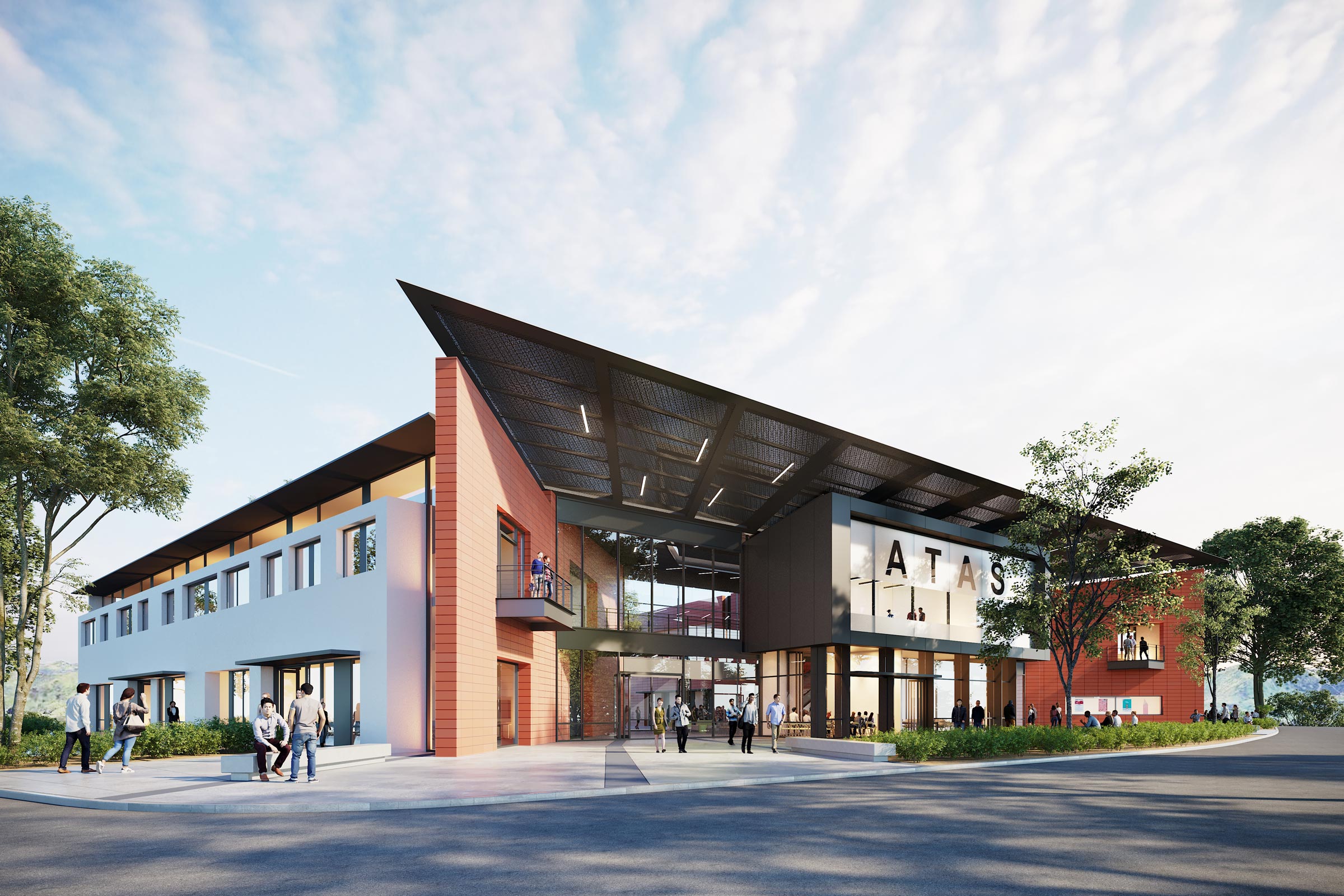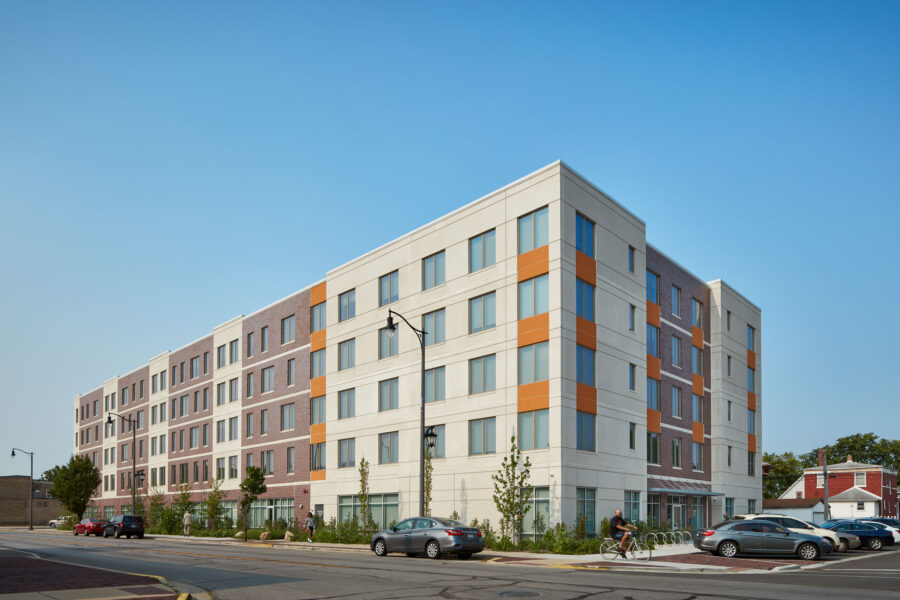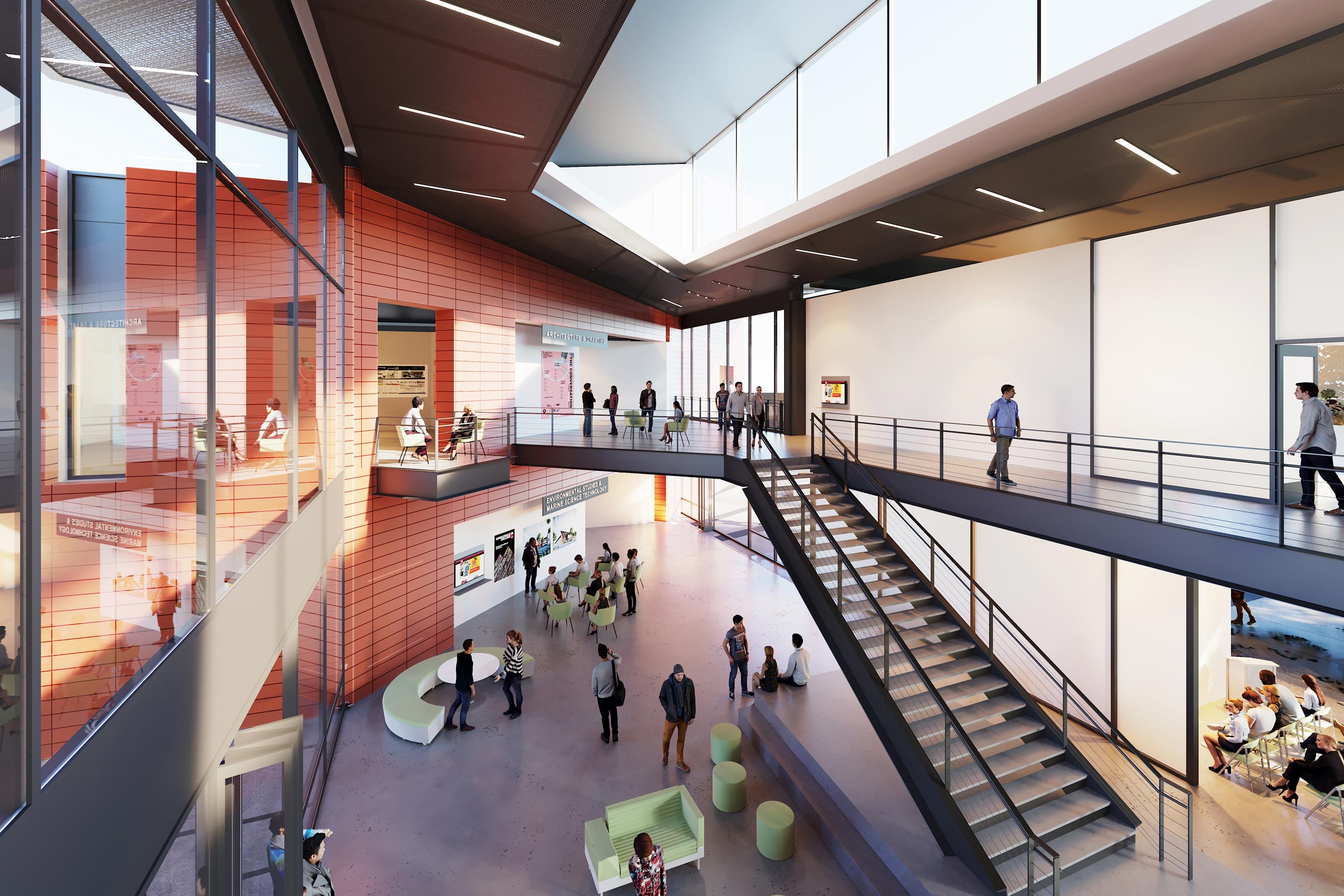Story at a glance:
- Daniel Jaconetti is a senior project architect and the National Sustainable Design Leader for the architecture firm HED.
- His position has him educating clients about potential environmental concerns for projects and providing the best buildings possible according to their preferences and sustainability practices.
- Jaconetti helps HED work to comply with the 2030 challenge.
Daniel Jaconetti grew up in the rural suburban setting of upstate New York, where he developed an appreciation for nature and the environment and a realization that it’s something that needs to be protected. He became interested in sustainable design practices and architecture in high school and college.
Jaconetti is both the National Sustainable Design Leader and a senior project architect for architecture firm HED. His works showcase his consideration for the environment and his belief in fighting climate change. Some of these include Saddleback College’s New Advanced Technology & Applied Sciences Building, San Diego Energy Equity Campus, Lathrop, and Fifth Avenue in Chicago. He is currently working on a new health stem facility at Michigan Tech University in Michigan’s Upper Peninsula.
“We need to get to zero emissions as soon as possible,” Jaconetti says. “It’s not a dramatization: Lives are at stake. We must use our influence within the industry and on every project to not just do less harm but be a regenerative force. The water leaving our site should be cleaner than when it fell, the air should leave the building purified; that’s what the 2030 Commitment is about—making every facility a working piece of the ecosystem rather than a source of damage. This is not advocacy; it’s being responsible corporate citizens.”
We recently talked to Jaconetti to learn more about his projects, sustainable design, and climate change.
How do you factor climate change into your work?

The Advanced Technology and Applied Science building at Saddleback College is designed to achieve Zero Net Energy with a LEED Gold rating using passive strategies integrated into the design of the building to minimize energy consumption. Site orientation, geometric relationships between adjacent masses, and an aggressive self-shading strategy all lower loads on the building. Rendering courtesy of HED
Our first responsibility is to educate, and then it’s to design for clients the best possible building or project that meets their needs.
Being the best possible building means it’s resilient, energy-efficient, comfortable, and doesn’t have toxic chemicals in it. This is part of the reason why, a couple years ago, AIA took their framework for Design Excellence and merged that with sustainable design. Now, for any chapter in this country, if you submit for a design award, you are evaluated against sustainable criteria, because they’re saying that a project’s design cannot be excellent unless it’s also sustainable, and that’s why we too adopt it at HED.
We used to use a checklist, like a LEED checklist to measure every project against. It’s great, but it’s also very black and white. We’ve now moved into using the AIA framework for Design Excellence. Now when you sit down with a client and have your initial kickoff and talk about strategies, the types of questions are things like: “How could this project engage and benefit the community?,” “How is this project going to participate in a responsible water cycle on the site?,” “How can you actually participate like you’re a piece of the natural ecosystem?”
The energy piece is probably the one that makes the most sense to people—being as efficient as possible. You’re putting out less emissions and you’re taxing the system less.
It’s not just about environmental resiliency, though. Walk down a city street with a bunch of vacant storefronts. That doesn’t do well for the city, but if the project is designed so that it can change and evolve, when somebody leaves someone else can come in. Those are all things we need to share with and prepare our clients for at the beginning of the project.
Who do you think is leading the way when it comes to green building?

The San Diego Energy Equity Campus will be a hub for new businesses, workforce and career development, and education for the community. The project is being designed with all electric buildings and a net zero goal. The buildings include offices (two levels with up to four tenants per floor) and industrial “flex-tech” spaces (one level with up to 10 tenants) as well as outdoor learning spaces. A 330kW photovoltaic system will help power the facilities. Rendering courtesy of HED
I did a little research on this because I was curious. Yale has an index on this, called the EPI, or the environmental performance index, and they look at a lot of things. Particularly they look at leadership in slowing CO2 emissions, which is what net zero was all about, and also things like air quality and preserving water resources. They give Denmark the number one spot with an index rating of 82.5. To contextualize that, the US is 24th, with an index criteria of 69.3. In that tier of the 80s, it goes Denmark, Luxembourg, Switzerland, the UK, and France. It starts to drop off from there.
I dug in a little bit to understand why that’s the case. It seems like these countries are dedicating capital to eco-friendly culture, which I feel like in the US hasn’t really been mainstream. When our government changes potentially every four or eight years, things swing one way versus the other. For the past four years we’ve been way on the other side, and now, with the Build Back Better Plan, things are swinging the other direction.
This quote from the website visual capitalist says, “When a sustainable ethos is applied to policy and business, it typically bodes well for economies and people alike.” In this country there is this dialogue about sustainable practices being expensive. “Preserving the national parks is anti-business,” which is not true. I think that different cultural attitude in those European countries is why we’re number 24 and Denmark’s number one.
What’s happening now? And where do we need to go from here?

The 72-unit affordable housing project Fifth Avenue Apartments was selected in 2018 to participate in the Living Building Challenge’s affordable housing pilot program. The homes were designed to achieve the program’s criteria, though they were ultimately not able to achieve the certification due to financial and regulatory barriers. Photo courtesy of HED
We’re part of a large firm roundtable with AIA with 50 peer firms. As a group of architects we’re working together to transform the industry. We’re doing the right things as a group, but you often face clients, politicians, or general people that don’t understand the importance. We have to work together to understand that.
If we look at the energy piece, for example, and people say, “Net-zero must be really expensive, it’s not affordable, how are we going to do it?” Saddleback is a good example. As an architect you have to do all the right things, which means you start with the climate analysis of the site. With Saddleback, we learned pretty quickly that 80% of the comfort requirements of the building could be met through passive strategies. That means you are only relying on energy for 20%. That means if you want to cover that with renewables, like onsite PV, it becomes much more feasible because of the size of the building and the amount of panels you can have on the roof.
Is it scary to say net zero to a client out of the gate? Is it better to talk about energy efficiency? As you prove net zero is achievable say, “Hey, we can make this net zero.” Or, from an educational standpoint, do you start out of the gate by saying, “Net zero is not necessarily too expensive to do. And it’s going to give you a more resilient project. And eventually your energy costs are going to be lower.”
That’s a good pivot to the second project, which is the San Diego Energy Equity campus, because the client was already ready for this. They understood not everybody has been treated equitably in the energy world, particularly underserved communities. They asked: Can we make a facility whose mission is to actually support that and educate about that?
It’s a spec tech incubator for energy-efficient and net zero technologies, but they’re publicly touting the importance of making all levels of society participate, contribute, and benefit from minimizing climate impacts. They’re doing things like education, demonstration, vocational tech training, and business development in a way that makes clean energy and decarbonization equitable for everybody.
Those two are good examples of the energy piece. The Fifth Avenue project takes the energy piece and pivots it into a public advocacy piece as an affordable housing project. The way that works here in Illinois is that there’s multiple project proposals that are competing for state and federal funding for affordable housing. And when you do that, they’re scored by something called the QAP Form, which gives points for different pieces of the proposed project.
Our studio leader for affordable housing, Susan King, has been an advocate for this for decades. Our firm has been pushing to give more points toward sustainable strategies in that form. At the time of the Fifth Avenue project, the form was not giving enough points for passive house or for Living Building Challenge. We could not get the funding to do those things, but we started a pilot project for the Living Building Challenge to identify what the barriers are so that on the next project we can overcome them.
Barrier number one is the financial piece. Already the QAP IHDC is changing the QAP to put 10 points for Passive House. We have a subsequent project called Conservatory Housing that is going to do Passive House for an affordable housing project, because they’re taking the formula and they’re basing it toward sustainable design and energy efficiency. The second thing that needs to happen is, and people are lobbying this, the state of Illinois has to change the plumbing code at the Department of Health to allow water reuse, because right now, you cannot do grey water systems, black water systems, rainwater harvesting, and reuse. It’s prohibited, and if you want to do the Living Building Challenge, that’s a big piece of it. Your project is supposed to regenerate the water cycle and not just take in clean water and put out dirty water. That’s a good example of using work to become an advocate. And try to make the government policies more supportive of these kinds of high end projects or high efficiency projects.




